- Overview of Watermelon
- Origin and History
- Varieties
- Growing Conditions
- Planting and Harvesting
- Uses
- Fun Facts
- Watermelon Seed Selection
- 1. Seed Variety
- 2. Growing Conditions
- 3. Disease Resistance
- 4. Seed Quality
- 5. Personal Preferences
- Conclusion
- Choosing the Right Seeds
- Treating the Seeds
- 1. Cleaning the seeds
- 2. Soaking the seeds
- 3. Seed drying
- 4. Seed treatment
- 5. Storage
- Planting Watermelon Seeds
- Preparation of Soil
- 1. Site Selection
- 2. Clearing the Area
- 3. Soil Testing
- 4. Adding Organic Matter
- 5. Deep Tilling
- 6. Leveling the Soil
- 7. Fertilizer Application
- 8. Mulching
- Sowing the Seeds
- 1. Choosing the Seeds
- 2. Preparing the Soil
- 3. Planting the Seeds
- 4. Watering and Care
- 5. Transplanting Seedlings
- Watering and Fertilizing
- Watering
- Fertilizing
- Watering the Plants
- Fertilizing the Plants
- 1. Soil Testing
- 2. Nitrogen Application
- 3. Phosphorus and Potassium
- 4. Organic Matter
- 5. Time of Application
- 6. Application Methods
- 7. Watering
- “Question-Answer”
- How long does it take for watermelons to grow from seed to 20kg fruit?
- What is the ideal soil type for growing watermelons?
- How often should watermelons be watered?
- What are some common pests that can affect watermelon plants?
- Are there any special techniques for improving watermelon size and sweetness?
- “Video” Watermelon time lapse – 24 days – 4k #greentimelapse #gtl #timelapse
Growing watermelons is a rewarding and satisfying process that requires patience, care, and attention to detail. From planting the seeds to harvesting a 20kg fruit, the journey of a watermelon is filled with various stages of growth and development.
It all begins with selecting the right seeds. There are countless watermelon varieties available, each with its own unique flavor, size, and ripening time. Some popular varieties include Sugar Baby, Crimson Sweet, and Charleston Gray. Once the seeds are chosen, they are sown in nutrient-rich soil and given the proper conditions for germination.
As the seeds sprout, they develop into small seedlings that require careful nurturing. They need warmth, sunlight, and adequate water to grow into strong and healthy plants. It’s essential to protect the young seedlings from pests and diseases, providing them with a favorable environment for their growth.
Over time, the seedlings grow into vines that start producing flowers. These flowers attract pollinators like bees, who play a crucial role in the pollination process. Once pollinated, the flowers give way to small green fruits that gradually mature and expand in size. Monitoring the growth and providing the necessary nutrients is crucial during this stage to ensure healthy fruit development.
After a few months of diligent care and attention, the watermelons are finally ready for harvest. The size, weight, and flavor of the fruit are indicative of its maturity. A ripe watermelon typically weighs around 20kg and has a deep hollow sound when tapped. It’s a gratifying moment for any watermelon grower to witness the fruits of their labor.
In conclusion, the process of growing watermelons is a fascinating journey that requires dedication and knowledge. From selecting the right seeds to providing the optimal conditions for growth, every step in the process contributes to the final result of a 20kg fruit that is juicy, delicious, and perfect for summertime enjoyment.
Overview of Watermelon
Watermelon is a delicious and refreshing fruit that is popular during the summer months. It is a member of the Cucurbitaceae family, which includes cucumbers, squash, and pumpkins. Watermelons are known for their high water content, sweet taste, and vibrant red or pink flesh.
Origin and History
The exact origin of watermelon is not known, but it is believed to have originated in Africa thousands of years ago. It was first cultivated in ancient Egypt and then spread to other parts of the world through trade and exploration. Today, watermelons are grown in many countries around the world, including the United States, China, Russia, and Brazil.
Varieties
There are numerous varieties of watermelon, each with its own unique characteristics. Some popular varieties include:
- Black Diamond: A large, oval-shaped watermelon with a dark green rind and sweet, juicy flesh.
- Sugar Baby: A small watermelon with a dark green rind and deep red flesh. It is known for its high sugar content.
- Crimson Sweet: A medium-sized watermelon with a light green rind and sweet, crisp flesh. It is popular for its high sugar content.
- Jubilee: A large, elongated watermelon with a light green rind and sweet, juicy flesh.
Growing Conditions
Watermelons thrive in warm climates with full sun exposure. They require well-drained soil that is rich in organic matter. The ideal temperature for watermelon growth is between 70°F and 90°F (21°C and 32°C). They also need plenty of water, especially during the fruiting stage.
Planting and Harvesting
Watermelons are typically grown from seeds. The seeds are planted directly in the ground or in seedling trays and then transplanted into the garden. The time from planting to harvest can vary depending on the variety, but it usually takes around 80-90 days.
When the watermelons are ripe, they can be harvested by cutting the fruit from the vine. The best way to determine if a watermelon is ripe is by tapping on its rind and listening for a dull, hollow sound. Additionally, the underside of the watermelon should have a creamy yellow color.
Uses
Watermelon is a versatile fruit that can be enjoyed in many ways. It is commonly eaten fresh on its own or used in salads, smoothies, and desserts. The rind of the watermelon can also be pickled and used as a condiment.
Watermelon is not only delicious but also nutritious. It is a good source of vitamins A and C, as well as potassium and lycopene, which are antioxidants that help protect the body against damage from free radicals.
Fun Facts
- The world record for the heaviest watermelon weighed over 350 pounds!
- Watermelon is about 92% water, making it a hydrating fruit.
- In China, watermelon is a popular gift to bring to a host to signify good luck.
Watermelon Seed Selection
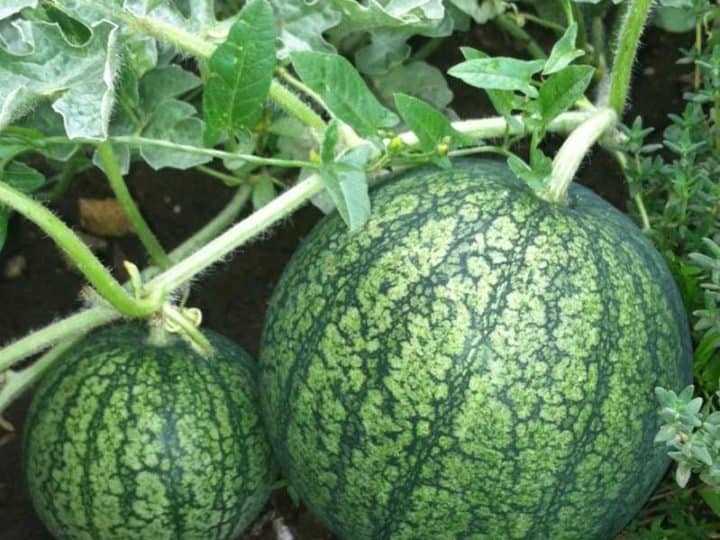
Choosing the right watermelon seeds is crucial for a successful growing process. Here are some factors to consider when selecting watermelon seeds:
1. Seed Variety
There are various watermelon varieties available, each with its own characteristics. Some popular watermelon varieties include:
- Red-fleshed watermelons: These are the most common type of watermelons, with vibrant red flesh and a sweet taste.
- Yellow-fleshed watermelons: These watermelons have a bright yellow flesh and a slightly milder flavor than red-fleshed varieties.
- Seedless watermelons: As the name suggests, these watermelons have few or no seeds, making them easier to eat and enjoy.
- Mini watermelons: These smaller-sized watermelons are perfect for individuals or small families.
2. Growing Conditions
Consider the growing conditions you have available when selecting watermelon seeds. Some watermelon varieties are more suited for specific climates or soil types, while others are more adaptable.
For example, if you live in a region with a short growing season, choose a watermelon variety with a shorter maturity period.
3. Disease Resistance
Check for disease resistance when purchasing watermelon seeds. Some varieties are bred to be resistant to common watermelon diseases, such as fusarium wilt or powdery mildew. Choosing disease-resistant seeds can help ensure a healthier and more successful crop.
4. Seed Quality
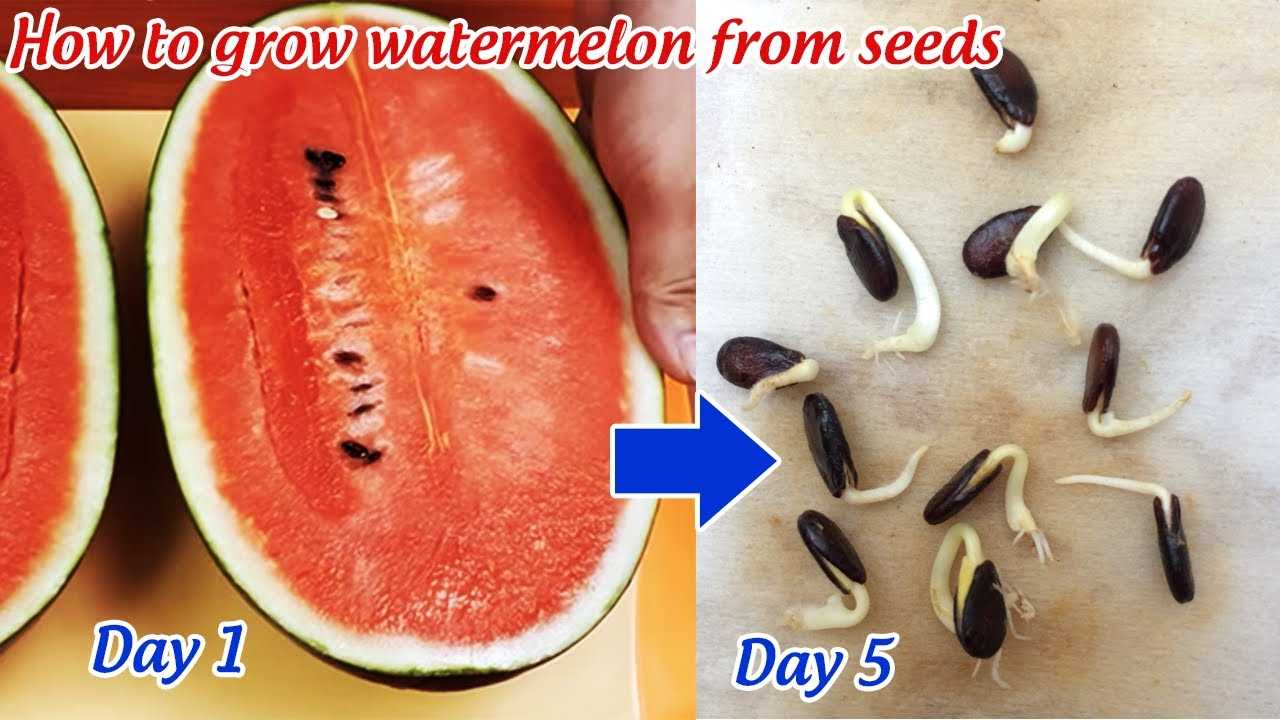
Ensure that the watermelon seeds you purchase are of high quality. Look for seeds that are plump, uniform in size, and free from cracks or damage.
It’s also a good idea to choose seeds from reputable seed suppliers or nurseries to ensure their viability.
5. Personal Preferences
Lastly, consider your own taste preferences when selecting watermelon seeds. Do you prefer a sweeter or milder flavor? Do you like a particular type of watermelon flesh? Taking your personal preferences into account can help you choose the perfect variety for your needs.
Conclusion
Choosing the right watermelon seeds is essential to a successful growing process. Consider factors such as seed variety, growing conditions, disease resistance, seed quality, and personal preferences when selecting watermelon seeds. By carefully choosing the right seeds, you’ll be on your way to growing delicious watermelons in no time!
Choosing the Right Seeds
When it comes to growing watermelons, choosing the right seeds is crucial to ensure a successful harvest. There are several factors to consider when selecting watermelon seeds:
- Variety: Watermelons come in various varieties, each with its own unique characteristics. Some popular varieties include Crimson Sweet, Jubilee, and Sugar Baby. Consider the size, taste, and texture of the melons you prefer, as well as the growing conditions available.
- Seedless or Seeded: Decide whether you want to grow seedless watermelons or those with seeds. Seedless watermelons are more popular as they are easier to eat and have a smoother texture. However, seeded watermelons can be more flavorful and have a longer shelf life.
- Growing Region: Different watermelon varieties thrive in different climatic conditions. Consider the climate and growing season in your region to choose seeds that are best suited for your area. Some varieties are more tolerant to heat, while others are more cold-tolerant.
- Growing Space: Determine the amount of space you have available for growing watermelons. Some varieties have smaller vines and are more suitable for smaller gardens or containers, while others require more space to spread out.
Once you have considered these factors, you can purchase your watermelon seeds from a reputable seed company or local nursery. Make sure to follow the instructions on the seed packet for optimal planting and growing conditions.
Treating the Seeds
Once you have selected the watermelon seeds that you would like to plant, it is important to treat them properly before sowing. Treating the seeds can help improve germination rates and reduce the chances of diseases and pests affecting your watermelon plants. Here are a few steps to follow when treating watermelon seeds:
1. Cleaning the seeds
Start by cleaning the seeds to remove any debris or pulp that may be attached to them. Rinse the seeds in clean water and gently rub them to remove any residue. You can also soak the seeds in water for a few minutes to help loosen any stubborn debris.
2. Soaking the seeds
Soaking watermelon seeds before planting can help speed up the germination process. Fill a container with warm water and place the seeds in it. Allow the seeds to soak for about 24 hours. This will help soften the seed coat and trigger the germination process.
3. Seed drying
After soaking, remove the seeds from the water and place them on a dry paper towel or a clean cloth. Allow the seeds to air dry for a few hours, ensuring that they are completely dry before moving to the next step. This will help prevent mold or fungus growth during the germination process.
4. Seed treatment
Watermelon seeds can be further treated with fungicides or other seed treatments to protect them from diseases and pests. Follow the instructions on the seed treatment product and apply it carefully to the seeds. This step is optional but can help ensure healthy seedlings.
5. Storage
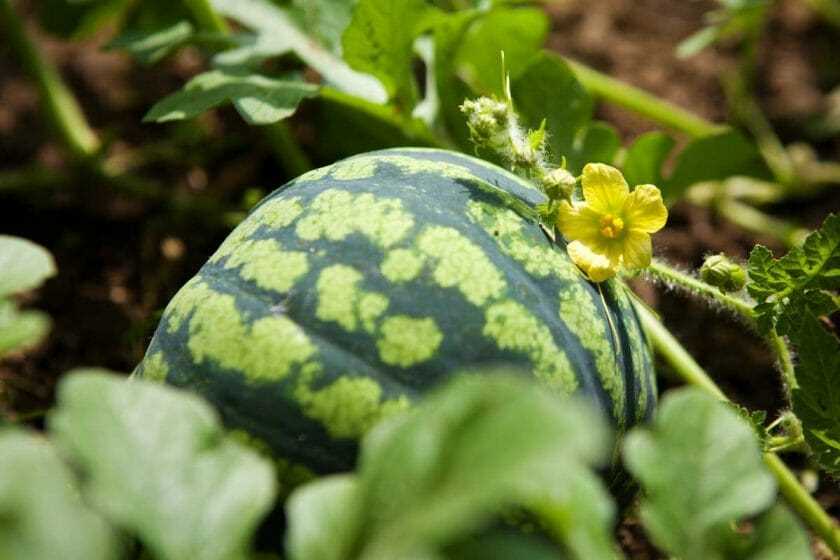
If you are not planning to plant the treated seeds immediately, it is important to store them properly. Place the dried and treated seeds in a clean, sealed container, such as a paper envelope or a tightly sealed plastic bag. Store the seeds in a cool and dry location until you are ready to plant them.
By properly treating the watermelon seeds before sowing, you can improve the chances of successful germination and healthy plant growth. Take your time to follow these steps, and soon you will be on your way to growing your own juicy and delicious watermelons!
Planting Watermelon Seeds
Planting watermelon seeds is the first step in the process of growing watermelons. Here are some important steps to follow:
- Choose the Right Time: Watermelon seeds should be planted in the spring, after the danger of frost has passed and the soil temperature is consistently above 60°F (15°C).
- Select a Suitable Location: Find a sunny spot in your garden or a location with at least 6-8 hours of direct sunlight per day.
- Prepare the Soil: Watermelons prefer well-drained soil that is rich in organic matter. Before planting, loosen the soil to a depth of at least 12 inches and mix in compost or well-rotted manure.
- Sow the Seeds: Create mounds or hills in the soil, spaced 6-8 feet apart. Each mound should be about 3 feet in diameter. Plant 4-6 watermelon seeds about 1 inch deep in each mound.
- Keep the Soil Moist: Water the soil thoroughly after planting the seeds and ensure that the soil remains consistently moist throughout the growing season. Avoid overwatering, as it can lead to rotting.
- Thin the Seedlings: Once the seedlings emerge and develop their first sets of true leaves, thin them to leave only the strongest and healthiest seedling in each mound.
- Provide Support: As the watermelon vines grow, gently guide them along a trellis or provide support with stakes to keep the fruit off the ground. This helps prevent rotting and improves air circulation.
- Mulch and Weed: Apply a layer of organic mulch around the plants to conserve moisture, suppress weeds, and maintain an even soil temperature.
By following these steps, you can successfully plant watermelon seeds and start your journey towards growing delicious, juicy watermelons.
Preparation of Soil
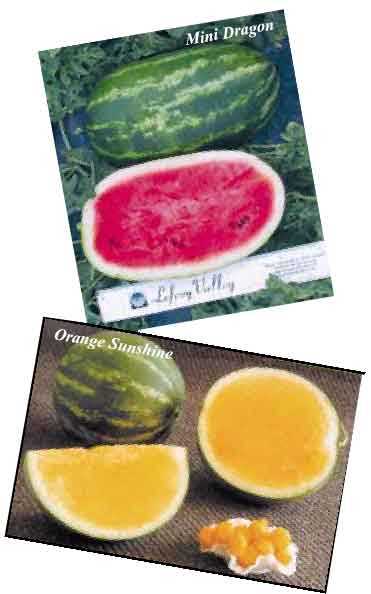
To ensure the successful growth of watermelons, it is crucial to prepare the soil properly. The soil needs to be rich in nutrients and have the right texture to provide a favorable environment for the plants to thrive. Here are some steps to prepare the soil for watermelon cultivation:
1. Site Selection
Choose a location with ample sunlight, preferably at least 6-8 hours of direct sunlight per day. Watermelons also prefer well-drained soil, so avoid areas with poor drainage.
2. Clearing the Area
Start by clearing the area of any existing vegetation, rocks, or debris. This will ensure that the watermelon plants have sufficient space to grow and won’t have to compete for nutrients with other plants.
3. Soil Testing
It is recommended to conduct a soil test to determine its pH level and nutrient content. Watermelons prefer a slightly acidic soil with a pH level between 6.0 and 6.8. Based on the test results, necessary amendments can be made to adjust the soil’s pH level and nutrient balance.
4. Adding Organic Matter
Watermelons thrive in nutrient-rich soils. Add organic matter such as compost, well-rotted manure, or leaf mold to improve the soil’s fertility. Incorporate the organic matter into the soil to a depth of at least 8-10 inches.
5. Deep Tilling
Use a tiller or garden fork to till the soil to a depth of at least 12 inches. This will help loosen the soil and create a good rooting environment for the watermelon plants.
6. Leveling the Soil
After tilling, level the soil by raking it to ensure even planting and drainage. This will prevent uneven water distribution and pooling, which can lead to waterlogging and root rot.
7. Fertilizer Application
Before planting, apply a balanced fertilizer to provide the necessary nutrients for the watermelon plants. Follow the instructions on the fertilizer package for the appropriate dosage and distribution method.
8. Mulching
Mulching helps retain moisture in the soil and suppress weed growth. Use organic mulch, such as straw or shredded leaves, to cover the soil around the watermelon plants. This will also help regulate soil temperature and prevent soil erosion.
By following these steps, you can ensure that the soil is well-prepared for growing watermelons. Remember to provide regular watering and weed control throughout the growing season to maximize the yield and quality of the fruits.
Sowing the Seeds
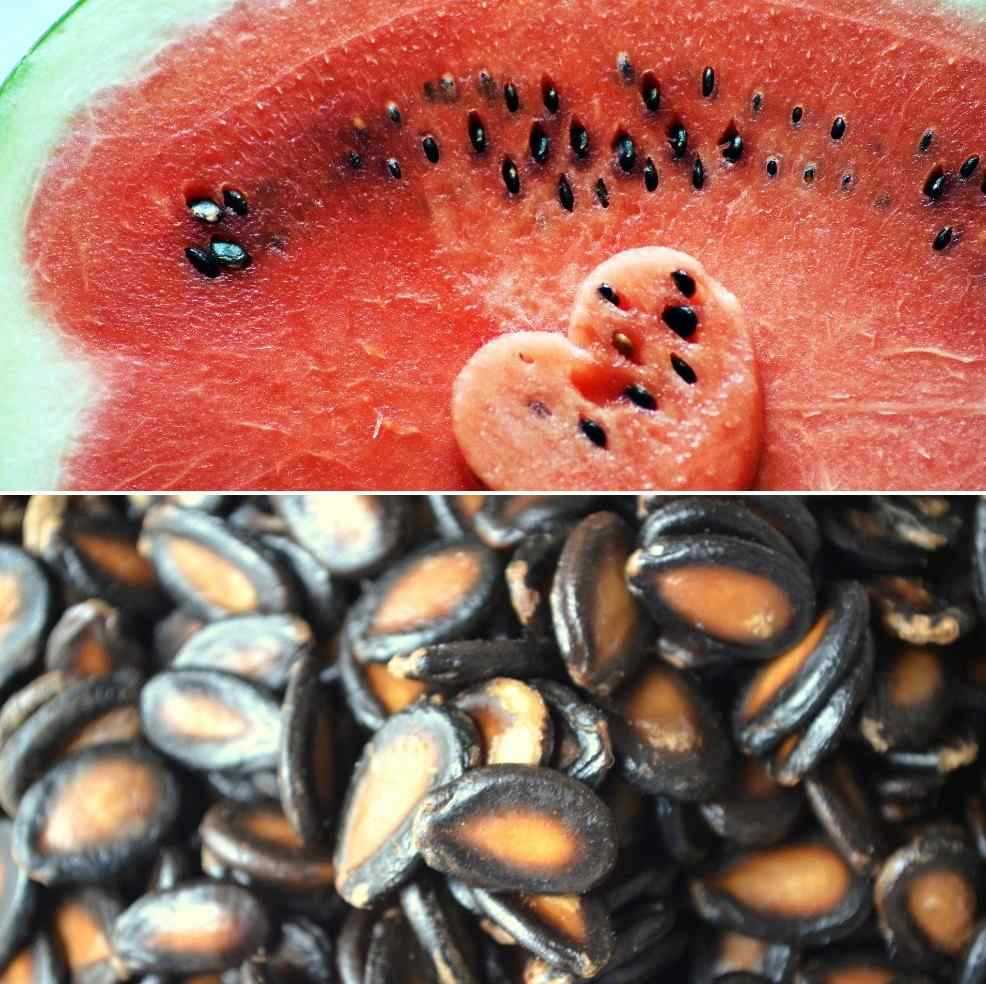
Watermelon seeds can be sown directly in the ground or started indoors depending on your growing season and climate. Here are some steps to get you started:
1. Choosing the Seeds
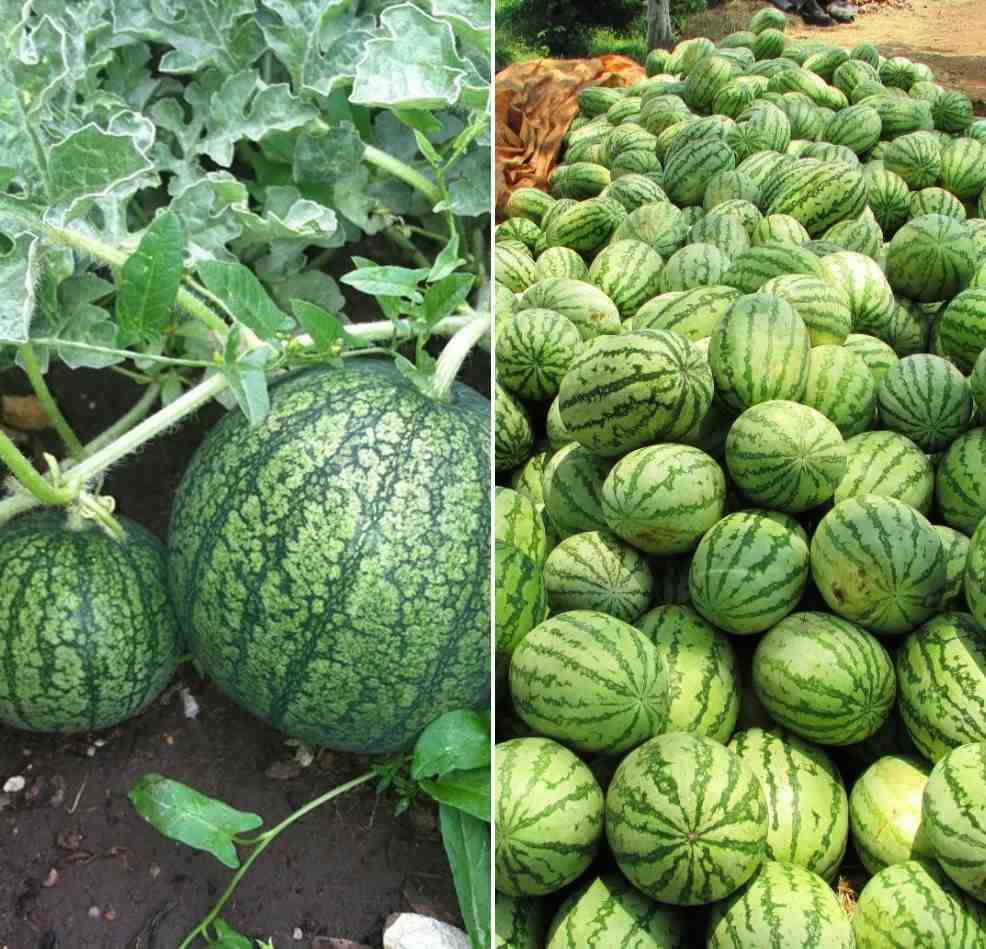
When selecting watermelon seeds, consider the variety you want to grow. There are many different types available, each with its own characteristics, such as size, shape, and flavor. Some popular watermelon varieties include:
- Icebox: Small-sized watermelons perfect for individuals or small families.
- Heritage: Traditional watermelon varieties known for their sweet taste and large size.
- Seedless: These watermelons do contain seeds, but they are much smaller and easier to eat.
2. Preparing the Soil
Watermelons prefer well-drained soil and plenty of sunlight. Before planting, prepare the soil by removing any weeds and loosening it with a garden fork or tiller. It is also recommended to amend the soil with organic matter, such as compost or aged manure, to improve fertility and moisture retention.
3. Planting the Seeds
Watermelon seeds should be planted in rows or hills, depending on your planting preference. Here are the steps for both methods:
- Row Planting:
- Make a furrow in the soil about 1 inch deep and 6 feet apart.
- Place the watermelon seeds in the furrow, spacing them about 2-3 inches apart.
- Cover the seeds with soil and gently firm the soil over them.
- Hill Planting:
- Create mounds of soil about 2 feet in diameter and 6 feet apart.
- Plant 3-4 watermelon seeds in each mound, spacing them evenly.
- Cover the seeds with soil and gently firm the soil over them.
4. Watering and Care
After planting the watermelon seeds, water the soil thoroughly. Keep the soil moist but not waterlogged during the germination and growing process. It is also important to provide support for the vines as they grow by using trellises or stakes. Apply a layer of mulch around the plants to suppress weeds and retain moisture.
5. Transplanting Seedlings
If you decide to start the watermelon seeds indoors, transplant the seedlings into the garden when they have a few true leaves and the soil has warmed up. Carefully remove the seedlings from their containers and plant them in their designated spots, following the same planting instructions as mentioned earlier.
By following these steps, you will be on your way to growing healthy watermelon plants from seed!
Watering and Fertilizing
Watering and fertilizing are crucial steps in the watermelon growing process. Proper watering and fertilizing techniques ensure healthy plant growth and maximize fruit yield. Here are some important factors to consider when watering and fertilizing watermelons:
Watering
- Watermelons require regular watering, especially during hot and dry periods. Adequate water supply is essential for the plants to develop properly.
- It is recommended to water the plants deeply, allowing the water to reach the roots. Shallow watering may promote shallow root growth, making the plants more susceptible to stress.
- Watering in the early morning or late afternoon is ideal, as it allows the foliage to dry before nighttime, reducing the risk of fungal diseases.
- Monitor the moisture level in the soil by checking the top few inches. If it feels dry, it is time to water the plants.
- Avoid overwatering, as it may lead to root rot. Watermelons prefer well-drained soil.
Fertilizing
Watermelons require adequate nutrients for optimal growth and fruit development. Here are some tips for fertilizing watermelon plants:
- Before planting the watermelon seeds, amend the soil with organic matter like compost or well-rotted manure. This will provide a good foundation of nutrients for the plants.
- Apply a balanced fertilizer when the watermelon vines start to develop. Look for a fertilizer with equal amounts of nitrogen, phosphorus, and potassium.
- Follow the fertilizer manufacturer’s instructions for application rates and frequency. Over-fertilizing can lead to excessive leaf growth and reduced fruit production.
- Consider using a slow-release fertilizer to provide a steady supply of nutrients over an extended period.
- Monitor the plants for any signs of nutrient deficiencies, such as yellowing leaves or stunted growth. Adjust the fertilizer application accordingly.
By implementing proper watering and fertilizing practices, you can ensure healthy watermelon plants and an abundant harvest of delicious fruits!
Watering the Plants
Proper and regular watering is crucial for the growth and development of watermelon plants. Water is essential for carrying nutrients from the soil to the different parts of the plant, helping in photosynthesis, and maintaining turgidity.
Watering frequency: Watermelon plants need a constant supply of moisture, especially during the first few weeks after planting. As a general guideline, watermelons should receive about 1-2 inches of water per week. However, the actual frequency and amount of watering may vary depending on factors such as temperature, soil type, and stage of growth. It is important to monitor the moisture levels and adjust the watering accordingly.
Watering method: When watering watermelon plants, it is best to provide a deep and thorough watering rather than shallow watering. This encourages the roots to grow deep into the soil, allowing them to access nutrients and water more effectively. It is advisable to water the plants early in the morning or late in the evening to minimize evaporation and ensure that the water reaches the roots.
Watering techniques: There are a few popular techniques for watering watermelon plants:
- Drip irrigation: Drip irrigation is a highly efficient method of watering, which delivers water directly to the plant’s root zone. This method reduces water wastage and minimizes the risk of foliar diseases. It is recommended to use drip irrigation for watermelon plants.
- Soaker hoses: Soaker hoses are another effective method for watering watermelon plants. These hoses have tiny perforations that allow water to seep out slowly, providing a steady and even supply of moisture to the plants.
- Sprinklers: Sprinklers can also be used for watering watermelon plants, especially if drip irrigation or soaker hoses are not available. However, it is important to ensure that the foliage doesn’t stay wet for an extended period, as this can increase the risk of diseases.
Signs of overwatering and underwatering: It is essential to strike a balance between providing enough water and avoiding water stress for watermelon plants. Signs of overwatering include wilting, yellowing leaves, and root rot, while underwatering can result in stunted growth, dry soil, and shriveled fruits. Monitor the plants closely and adjust the watering schedule accordingly.
By following proper watering practices, you can ensure the healthy growth of watermelon plants and maximize their yield.
Fertilizing the Plants
Watermelon plants require proper nutrition to grow and produce good quality fruit. Fertilizing the plants is an essential part of the growing process. Here are some key points to keep in mind when fertilizing your watermelon plants:
1. Soil Testing
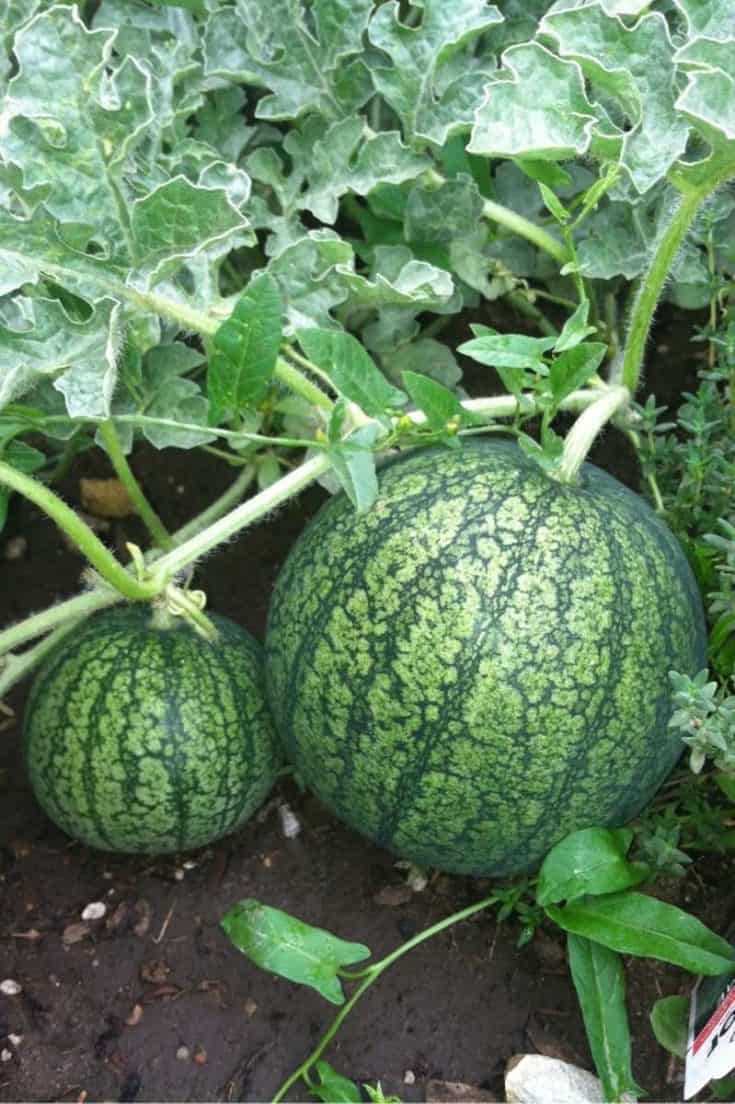
Before applying any fertilizers, it is recommended to conduct a soil test to determine the nutrient deficiencies and pH levels in your soil. This will help you calculate the right amount and type of fertilizer to use.
2. Nitrogen Application
Nitrogen is a crucial nutrient for watermelon plants as it facilitates leaf and stem growth. Apply nitrogen-rich fertilizers during the initial stages of plant growth to promote healthy foliage development.
3. Phosphorus and Potassium
Phosphorus aids in fruit development and root growth, while potassium improves plant resistance to diseases and enhances overall fruit quality. Incorporate phosphorous and potassium-based fertilizers during flowering and fruiting stages.
4. Organic Matter
In addition to synthetic fertilizers, it is beneficial to incorporate organic matter into the soil. Composted manure or organic compost can help improve soil structure, moisture retention, and nutrient availability.
5. Time of Application
Divide the total amount of fertilizer into multiple applications throughout the growing season. Begin fertilizing when the vines start to develop and continue until the fruit sets. Avoid excessive fertilization as it can lead to overgrowth and poor fruit quality.
6. Application Methods
There are two common methods for applying fertilizers: broadcasting and side dressing. Broadcasting involves spreading the fertilizer evenly across the soil surface, whereas side dressing involves applying the fertilizer in a narrow trench or band alongside the plants.
7. Watering
After applying fertilizers, make sure to water the plants thoroughly. This helps to distribute the nutrients in the soil and prevents the fertilizer from burning the plant roots.
Remember to always follow the manufacturer’s instructions when applying fertilizers and avoid using excessive amounts. Proper fertilization can significantly improve the growth and yield of watermelon plants, resulting in delicious and juicy fruits.
“Question-Answer”
How long does it take for watermelons to grow from seed to 20kg fruit?
Watermelons take approximately 80-85 days to grow from seed to 20kg fruit.
What is the ideal soil type for growing watermelons?
The ideal soil type for growing watermelons is sandy loam with good drainage.
How often should watermelons be watered?
Watermelons should be watered regularly, especially during hot and dry periods. They require about 1-2 inches of water per week.
What are some common pests that can affect watermelon plants?
Some common pests that can affect watermelon plants include aphids, cucumber beetles, and spider mites.
Are there any special techniques for improving watermelon size and sweetness?
Yes, there are several techniques for improving watermelon size and sweetness. These include hand pollination, pruning, and proper fertilization.







